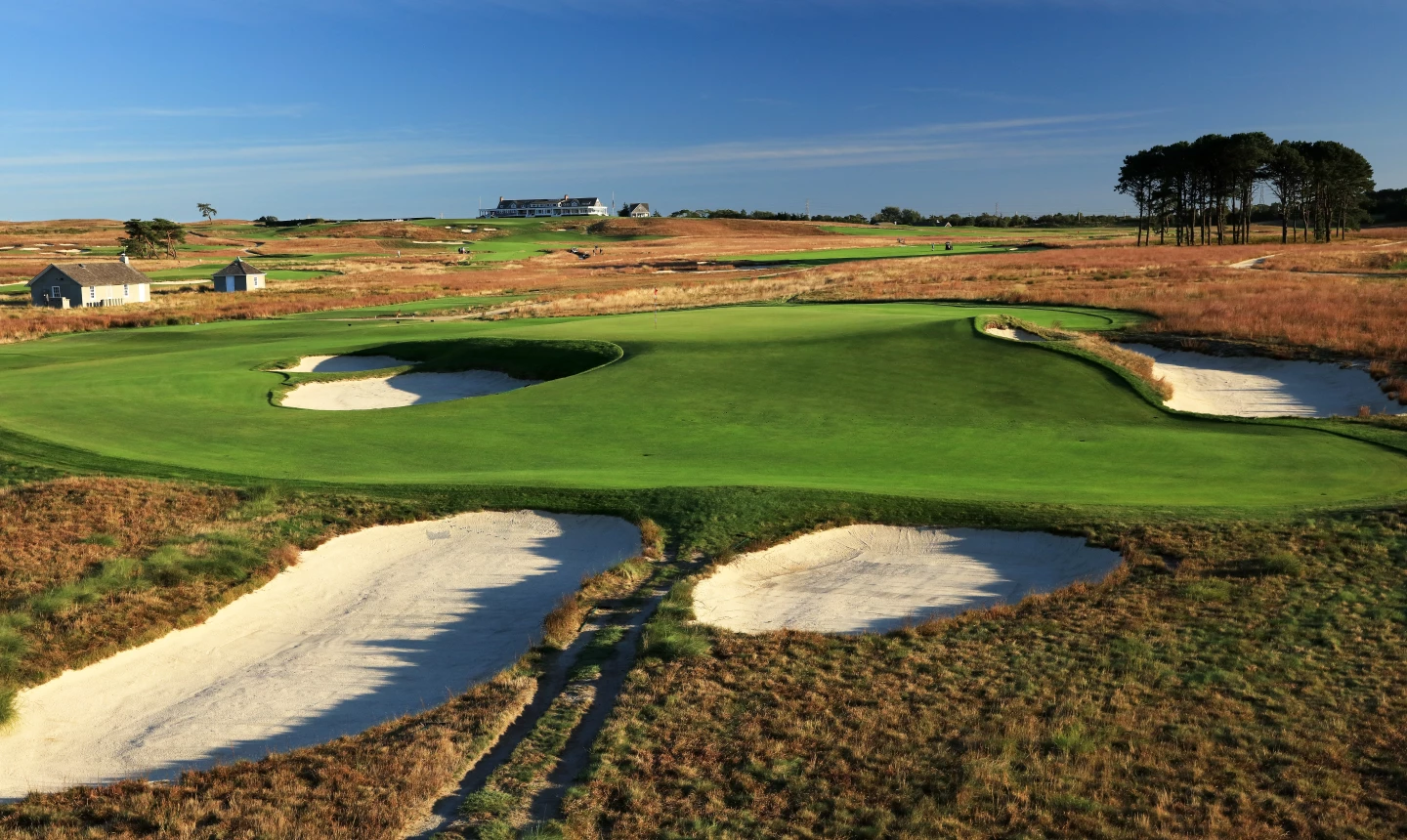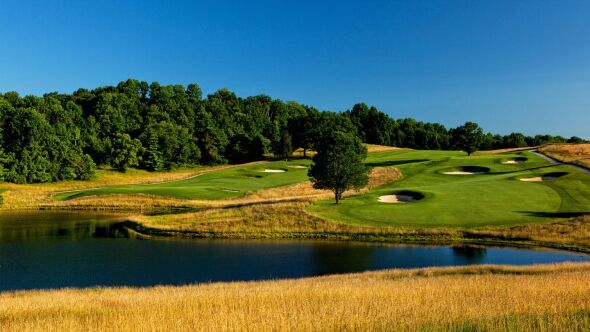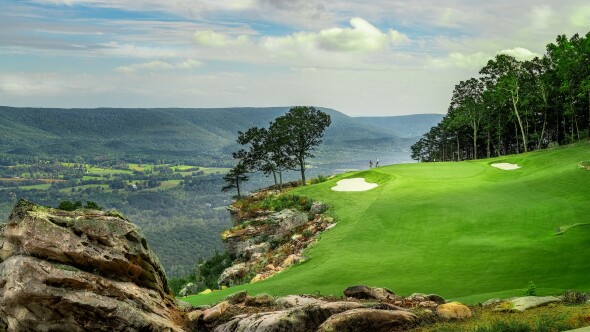SOUTHAMPTON, N.Y. - There’s a lot on the line for the USGA and for the Shinnecock Hills Golf Club this week. The hope and expectation are that they can overcome the disastrous legacy of the last U.S. Open held here, in 2004, when the greens went south and the course turned into a bone-dry dirt track that did not reward great shot-making.
The lasting memories, along with winner Retief Goosen’s brilliant work with the flat stick (12 one-putts, 24 putts total, on a day when the field average was 31.1) down the stretch, was of dust clouds across the fairways and greens. Play had to be stopped 90 minutes into Sunday’s round so that maintenance crews could apply water to the seventh green (and a few others) on an emergency basis to keep them from dying altogether.
Fourteen years later, the club and the USGA have learned their lessons. It’s time to move on - or will be, if they can show by Sunday night that all went smoothly this week. There’s every reason to believe they will. But only because they have come so far from that low point in the reputations of these two distinguished bodies.
The point here isn’t to belabor the past but to show how well intentioned people learn from it.
What went wrong at the 2004 U.S. Open
The problem started with the grass types at Shinnecock going into that U.S. Open. They were essentially meadow-turf types, primarily rye and Poa annua, with a broad leaf and not at all well-adapted to droughty conditions. Irrigation practices, based upon the club’s 20-year-old system, did not allow for control of spot applications to isolated areas; everything was broadcast from a long distance. Much of the water thrown was transported by the wind into the roughs, and over the years they had evolved from their original links-type character into lush rye and Poa annua. The greens were also Poa/rye, and were regularly supplemented by hand watering by Superintendent Mark Michaud’s crew.
Two weeks before the 2004 U.S. Open, USGA officials decided to firm up the golf course by withholding fairway irrigation. Their field staff, led by Senior Director of Rules and Competition Tom Meeks and Director of Championship Agronomy Tim Moraghan, were now effectively in charge.
The course was in ideal shape by Monday of practice week, with the greens registering 11.5 on the Stimpmeter. At that point, Michaud’s crew was under orders to withhold hand watering of greens. That was a break from standard practice for the putting surfaces. By Wednesday, with the traffic of players and their entourage taking their toll on the greens and the weather offering no relief in terms of moisture, signs of stress were evident even before the first round.
Agronomic science 14 years ago was, by today’s standards, primitive. As one former Shinnecock crew member (now a superintendent elsewhere) explains it: “We used to test moisture levels by inserting a knife into the green, withdrawing the blade and then feeling it for dampness.”
There was enough ambient moisture in the air – brought by prevailing southwesterly winds from the Atlantic Ocean - to keep the course on the edge without tumbling over. But things changed quickly late Saturday afternoon when the breeze made a turnaround and came in from the north. It was dry, strong and unrelenting – enough that by Sunday morning the course baked out.
Watering the course would have helped. But USGA policy was inflexible that weekend. It was partly a function of standard practice. They had picked out their hole locations for the week and were going to stick with them, even on the notoriously sloped par-3 Redan seventh hole, where Sunday’s cup sat just above a ridge that fed golf balls into bunkers and players were running even short putts just past the hole and then watching helplessly as they rolled into the sand.
Communications issues did not help, either. At one point, USGA Executive Director David Fay attributed the problem to unauthorized mechanical rolling of the green – in effect, throwing Michaud’s crew under the bus.
As with all such incidents, the causes were multiple: The wrong grasses for the task; limited infrastructure of the host course; bad decision-making by the USGA; and a turn in the weather that exposed the miniscule margin of error of the set up.
The fallout from the 2004 U.S. Open
The process of redemption began the day after the Open, during an intense “come to Jesus” meeting at Fay’s office in USGA Golf House. It could not have been a pleasant gathering. Change was needed. And big changes came both in personnel and in policy.
Over the next few years, the USGA developed an entirely new approach to course set up, hole locations and collaboration with the host site. At the Pinehurst U.S. Open in 2005, for example, the USGA began testing a prototype firmness meter to provide an objective index of the coefficient of restitution offered by the playing surface. Soon came the reliance upon moisture meters capable of measuring the precise water content of the soil.
It has helped this week that Shinnecock Hills has dramatically upgraded its facility. This will make course set up easier to maintain should conditions turn dry and droughty, as they did in 2004. Course Superintendent Jonathan Jennings, who replaced Michaud in 2010, has helped install a major restoration of the native, sandy roughs. The fairways and greens have been converted away from their meadow, lush nature and cultivated with much more bentgrass. The irrigation system has been adjusted to minimize unwanted spray and to concentrate water where needed. Greens expansion has recaptured lost hole locations, giving the USGA wider latitude in course set up.
Meeks and Moraghan left the USGA. Championship set up was taken over by Mike Davis. He had been Director of Competitions in 2004 and assumed full responsibility for course setup in 2005 before moving on to become USGA executive director in 2011. Despite being CEO of American golf’s ruling body, he has maintained authority for the day-to-day setups of the U.S. Open. At Shinnecock this year, that meant course walk-throughs at 5:30 a.m., reviewing proposed hole locations, wind direction weather forecasts, firmness and moisture data, Stimpmeter speeds and his own sense of the game. “It’s still an art," he says. "But we have so much more science to help us."
All of which should help Shinnecock Hills and the USGA escape from the shadow cast in 2004. This is their week for redemption. The shadow has been looming over them these 14 years. Davis, in particular, knows that for all his love of design, the course is a stage set for the world’s best players. It’s fine to be talking about the layout during the practice rounds. But if the media, the public and the contestants are still talking about the course on the weekend, there’s a problem.
















Didn't they make the same mistake at Chambers Bay? Change of personnel after 2004 Open? I don't remember Meeks or Moraghan getting fired. Heck Fay should have resigned. No one is accountble at USGA. It's like a bureaucratic government entity.
Was it Mike Davis who set the course at the Congressional US Open? He did that fine old course no favors, but chose to shave rough so low that balls fell into bunkers rather than staying in tall rough, such as the punishing areas that savaged Tom Kite in the previous Open there. He forced the grounds crews to remove many of the features that protected Congressional’s character, thus providing Rory with an unnaturally low winning round. Was it Mike Davis who dumbed down that historic venue to make it an easier than average tournament? I hope he knows more by now...
Eventually... there will be the mind-boggling revelation that the stimpmeter is not a god. I like fast greens. Absurdly fast greens (Olympic Club, 2012 Open) yield questions about windmills, clown mouths and skee-ball jumps. Putting on linoleum because some PGA official or club or club members are irrationally obsessed with high stimpmeter ratings... ratings that don't make the game more exacting, more challenging, more fun, more a test of skill than a test of luck... is unfortunate. You should be able to run a putt 16 inches beyond the hole without fear of running off the green and into the fringe or trap 80 feet away. Good shots should be rewarded, bad shots not. Relying on lucky shots because some official or club puffs up their chest and pronounces that "WE play with a 14 on the stimpmeter...", oh, oh.... I am sooooo impressed... it's just pathetic. When will the PGA/USGA/clubs learn, if ever ? Probably never. Remember, if you are below the hole, putt hard enough to assure that if you miss you will go at least 16 inches beyond the hole AND have a chance to still have it go in when it rolls back towards the hole, either going in the hole or off the green.